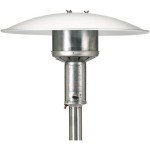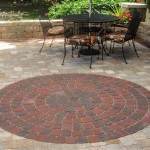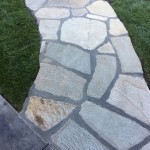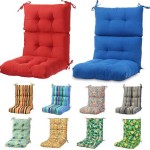Protecting Your Patio Furniture Investment: Winter Covering Strategies
Patio furniture represents a significant investment for many homeowners, providing a comfortable and aesthetically pleasing outdoor living space during warmer months. However, the harsh conditions of winter – snow, ice, rain, and extreme temperature fluctuations – can significantly damage these pieces, shortening their lifespan and diminishing their appearance. Covering patio furniture during the winter is a crucial protective measure that can mitigate these risks, preserving the furniture's integrity and ensuring its readiness for use when spring arrives.
The decision to cover patio furniture involves considering several factors, including the type of furniture material, the severity of the local winter climate, and the availability of suitable storage options. While indoor storage is often the ideal solution, it isn't always feasible due to space constraints. In these situations, high-quality, weather-resistant furniture covers become essential for safeguarding your outdoor investments.
Understanding the Benefits of Winter Furniture Covers
The primary benefit of using winter furniture covers is protection from the elements. Snow, ice, and rain can cause various types of damage, depending on the furniture material. Wood can warp, crack, or rot due to prolonged exposure to moisture. Metal can rust and corrode. Wicker can become brittle and unravel. Plastics can become faded and prone to cracking under extreme temperature changes. Covers act as a barrier, preventing direct contact with these damaging elements.
Beyond weather protection, covers also shield furniture from dirt, debris, and pests. Falling leaves, twigs, and animal droppings can stain or damage furniture surfaces. Rodents and insects may seek shelter in unprotected furniture, causing further damage. By keeping furniture clean and dry, covers help prevent these problems, reducing the need for extensive cleaning or repairs in the spring.
Furthermore, covering furniture can help minimize fading caused by prolonged exposure to UV rays. Even during winter months, sunlight can still contribute to the degradation of certain materials, particularly plastics and fabrics. UV-resistant covers can effectively block these harmful rays, preserving the original color and appearance of the furniture.
Selecting the Right Type of Furniture Cover
Choosing the appropriate type of furniture cover is crucial for ensuring optimal protection. Several factors should be considered, including the size and shape of the furniture, the material of the cover, and the features it offers.
Size and fit are paramount. A cover that is too small will not adequately protect the furniture, while a cover that is too large may allow wind and moisture to penetrate. Measure the furniture carefully and choose a cover that is appropriately sized, allowing for a snug and secure fit. Some covers are designed for specific furniture types, such as chairs, tables, or sectional sofas. Universal covers are also available, but it's important to ensure they provide adequate coverage for the furniture's dimensions.
The material of the cover is also a critical consideration. Polyethylene covers are an economical option, but they are less durable and may not withstand harsh weather conditions. Polyester covers are more durable and water-resistant, offering better protection against rain and snow. Vinyl covers are waterproof and easy to clean, but they can become brittle in cold temperatures. Breathable fabrics, such as canvas or treated polyester, allow moisture to escape, preventing the buildup of mold and mildew. Choosing a cover made from a durable, weather-resistant, and breathable material is essential for long-term protection.
Features such as vents, drawstrings, and buckles can enhance the functionality and effectiveness of furniture covers. Vents allow air to circulate, preventing condensation and reducing the risk of mold and mildew growth. Drawstrings and buckles secure the cover to the furniture, preventing it from being blown away by wind. Reinforced seams and UV protection further enhance the durability and longevity of the cover.
Proper Application and Maintenance of Furniture Covers
Even the best furniture cover will not provide adequate protection if it is not properly applied and maintained. Following these guidelines will ensure that your furniture remains protected throughout the winter months.
Before covering the furniture, clean it thoroughly to remove any dirt, debris, or stains. This will prevent these contaminants from becoming embedded in the furniture material during the winter months. Allow the furniture to dry completely before applying the cover. Covering wet furniture can trap moisture, leading to mold and mildew growth.
When applying the cover, ensure that it is snug and secure. Use drawstrings and buckles to tighten the cover around the furniture, preventing it from being blown away by wind. If the furniture has legs, consider raising it slightly off the ground to allow for better air circulation and prevent moisture from accumulating underneath. Bricks or paving stones can be used for this purpose.
Regularly inspect the cover for any signs of damage, such as tears or punctures. Repair any damage promptly to prevent water from penetrating the cover. Clean the cover periodically to remove dirt and debris. Mild soap and water can be used for this purpose. Allow the cover to dry completely before storing it.
In areas with heavy snowfall, it may be necessary to remove accumulated snow from the cover to prevent it from collapsing under the weight. A broom or soft-bristled brush can be used for this purpose. Avoid using sharp objects that could damage the cover.
When the winter season is over, remove the covers on a dry day. Clean the furniture thoroughly before using it. Store the covers in a dry, well-ventilated area to prevent mold and mildew growth. Following these maintenance practices will help extend the life of the covers and ensure that they are ready for use the following winter.
In conclusion, covering patio furniture during winter is an effective strategy for protecting against weather damage, dirt, debris and pests. Selection of high-quality, appropriately sized covers along with proper application and maintenance can significantly prolong the lifespan and preserve the aesthetic appeal of your outdoor furniture.

How To Winterize Patio Furniture The Cover Blog

How To Winterize Your Patio Furniture By Alco Covers

Tips To Properly Winterize Your Outdoor Space With Custom Covers For Fall And Winter Couverture

How To Winterize Patio Furniture The Cover Blog

How To Protect Patio Furniture In The Fall And Winter Forbes Vetted

Winter Proof Patio Covers Custom Made

Patio Furniture Storage Tips For Winter Compass Self

Winter Furniture Maintenance Its Snow Joke

Wintertime Wonders The Best Patio Furniture That Can Be Left Outside F J Outdoors

Shrink Wrap The Wickery Winter Storage Patio Furniture Covers
Related Posts








